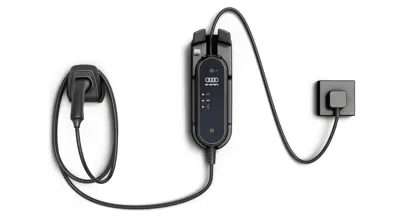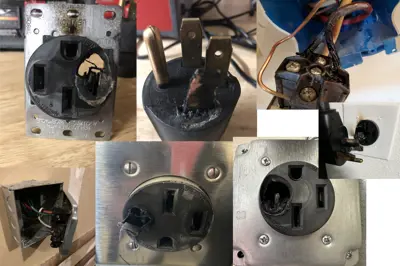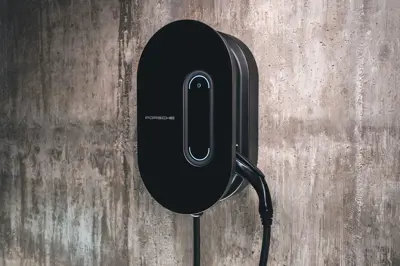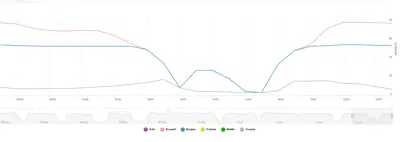Home Charging
Home charging is the most convenient and cost-effective way of charging an EV.
Home charging allows you to charge your EV overnight or whenever it is not in use, eliminating the need to find a public charging station. It can also reduce grid stress by using off-peak electricity.
However, home charging has its challenges. Not all homes have a dedicated parking space or a suitable electrical outlet for charging an EV.
How to Select Your Charging Station
When selecting a home charging station, consider several factors:
Plugged or Hardwired Charging Station?
Decide whether to install a hardwired or plugged home charger. EVKX recommends hardwired solutions, as plugs like Nema 14-50 can overheat and pose fire risks.
Many EVs include a portable EVSE for emergencies. It's best to keep this EVSE in your car for occasional use. In some countries, using a plugged EVSE as a permanent solution is prohibited.
Below are examples of overheated plugs. Fortunately, no one was harmed in these instances.
If you must use a plugged solution, use high-quality plugs and minimize unplugging to reduce wear and overheating risks.
What Charging Capacity Do You Need?
The required capacity depends on several factors:
- Daily Driving Distance: Longer daily drives require more energy to be charged overnight.
- EV Efficiency: More efficient EVs require less energy to replenish.
The table below shows energy consumption for different EVs at various daily driving distances (120km/h / 75mph).
| Model | 50km / 31 miles | 100km / 62 miles | 200km / 124 miles |
|---|---|---|---|
| Tesla Model 3 | 8.5kWh | 17kWh | 36kWh |
| Kia EV6 | 10kWh | 20kWh | 40kWh |
| Audi Q8 e-tron | 13kWh | 26kWh | 52kWh |
| Rivian R1S | 15kWh | 30kWh | 60kWh |
The table below shows how much energy different chargers can provide in 10 hours.
| Volt | Circuit (max load) | Capacity | 10-hour charging |
|---|---|---|---|
| 120 volt | 15 (12) | 1.4KW | 14kWh |
| 240 | 15 (12) | 2.8 KW | 28 kWh |
| 240 | 20 (16) | 3.7 KW | 37 kWh |
| 230 | 16 | 3.7 KW | 37 kWh |
| 240 | 30 (24) | 5.7KW | 57 kWh |
| 230 | 32 | 7.4 KW | 72 kWh |
| 240 | 40 (32) | 7.6KW | 76 kWh |
| 240 | 50 | 9.6KW | 96 kWh |
| 400 3 phase | 16 | 11 KW | 110 kWh |
| 240 | 60 (48) | 11.5KW | 115 kWh |
| 240 | 100 (80) | 19.2KW | 192 kWh |
| 400 3 phase | 32 | 22 KW | 220 kWh |
Even for high-consumption models, a 10-hour charge can replenish the energy needed for typical daily driving distances.
Consider future needs when installing a new circuit. The future is electric, and your current EV may not be your last. Install a circuit that can handle more power for future upgrades.
Check the electrical requirements of your chosen charger and compare them with your home's existing wiring and circuit breaker. You may need to upgrade your electrical panel or install a new dedicated circuit. Hire a licensed electrician to install your home charger according to local codes and regulations. You may also need permits and inspections from your utility company or municipality.
Smart or Dumb Charger?
Home charging is generally cheaper and more efficient than public charging, but costs and efficiency vary. Electricity rates can vary by region, season, and time of day. Smart chargers can optimize charging times to take advantage of lower rates.
The chart below shows next-day energy prices from Nordpool. A smart charger can use this data to plan optimal charging times, saving money.
Country-Specific Home Charging Info
USA
In the USA, there are two levels of home charging:
- Level 1 (120 volt): Standard household outlet providing about 5 miles of range per hour. Suitable for those driving less than 50 miles a day or with access to public/workplace chargers.
- Level 2 (240 volt): Requires a special charger and outlet, providing about 25 miles of range per hour. Suitable for those driving more miles daily or needing faster home charging.
Follow safety rules and regulations when installing and using home chargers. For example, the NEC 80% rule stipulates that electrical circuits should not be continuously loaded to more than 80% of their maximum rated capacity. Choose a charger that matches your circuit breaker and outlet capacity.
New US building codes require all new homes to be "EV ready," meaning they will have the necessary infrastructure for Level 2 charging.
For tips on charging stations in the US market, follow the "State of Charge" YouTube channel.
The Tesla Universal Wall Connector is a standout charger in the US market, allowing AC charging for EVs with NACS and J1772 connectors, making it future-proof.
See this review to understand why this charger is the best choice.
Below is a review video of the best charging stations for 2023 (created before the Tesla Universal Wall Connector was released).
UK
- The home charger must comply with the Electric Vehicles (Smart Charge Points) Regulations 2021, ensuring smart functionality and meeting security and privacy standards.
- The home charger must also comply with the minimum technical specification for residential chargepoints, defining outlet configurations, power output, safety standards, and more.
- The home charger must be installed by an accredited installer registered with the Office for Zero Emission Vehicles (OZEV) and follow the IET Wiring Regulations (BS 7671:2018 + A1:2020).
- The home charger must not exceed certain size and height limits for its exterior casing and upstand.
See the video below for UK-focused information on installing a home charger.




